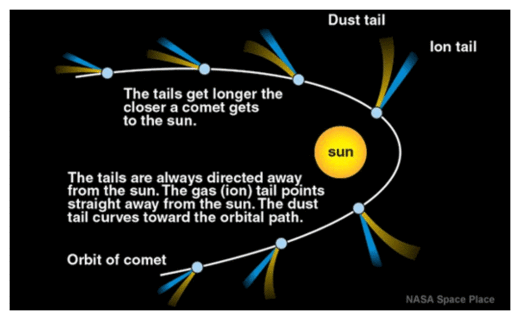 |
Department of Physics | AstroLab |
Orbits and Structure of Comets
Comets are small objects that travel around the Sun in highly eccentric orbits. A typical comet consists of a nucleus, a coma and a gas+dust tail. The nucleus is thought to be a "dirty snowball" a few kilometers across. As the comet enters the inner Solar System its outer layers vaporize and the coma (the diffuse cloud of gas and dust that surrounds the nucleus) and tails are produced.

The aim of the project is to independently determine the orbit of at least two comets and determine their structure (e.g. size, brightness, etc). Their orbits can be determined from a series of positional measurements. This is achieved by measuring the comet's position on a CCD image relative to the stars.
Most comets do not reach naked-eye brightness and can only be seen with large telescopes. However, at any given date, about half a dozen comets are available for study with the AstroLab telescopes. The "movie" below shows the bright comet C/2000 WM1 tracking across our CCD field-of-view.

Project Details Project References
| Back to the AstroLab Home Page | jrl | 2020-Jun-17 13:46:08 UTC |